It was August Bank Holiday Monday, the weather forecast was reasonable and we fancied going out but without sharing the same space as hundreds of other day trippers. The Cotswolds seemed like a good option, so we checked out Google Maps for a route. The decision was clinched when we came across a 70-mile circular 'Romantic Route', which offered a variety of options, rather than the usual tourist hot spots! It also provided some background information on each place, to help us decide what might be worth stopping for en route.
Moreton-in-Marsh was the first such stop, located in the northern Cotswolds on the old Roman Fosse Way. A pretty, bustling little 13th Century market town, with plenty of pre-requisite Cotswold Stone cottages lining the wide leafy high street. Moreton has been a traveller's town for at least 1700 years and was used as a coaching station before the coming of the Oxford to Worcester railway in 1853. The high street has many elegant eighteenth-century inns and houses including the Redesdale Market Hall. The oldest building is likely to be the sixteenth-century Curfew tower on the High Street. Its bell was rung nightly until 1860 to remind people of the risk of fire at night.
Keen to get 'off the beaten tourist track', we headed for the little village of Blockley. During the eighteenth century when the wool industry was in decline Blockley turned to silk production. By 1884 six silk mills powered by the fast-flowing Blockley brook provided work for about 600 people preparing silk for ribbon-making factories in Coventry. This small centre of industry began to decline after 1860 when the levy on imported silk was imposed.
It lead us to the charming 14th Century wooltraders town of Chipping Campden. As the name suggests ("Chipping" means market or market place from the old English "Ceping"), Chipping Campden was one of the most important of the medieval wool towns and famous throughout Europe. This legacy of fame and prosperity is everything that give the town its character.
Campden was already established in the 7th century and derives its name from the Saxon "Campa-denu" or "Campadene", meaning a valley with fields or enclosures of cultivated land. Wool from Cotswold Sheep, grazed on the surrounding farmland, was graded, sold and transported to London. The Woolstaplers Hall in the High Street was built in 1340 by a wool merchant, and the ancient Market Hall was built in 1627 by Sir Baptist Hicks for a cost of £90.00. It was for the purpose of giving shelter to the local market selling cheeese, butter and poultry - not wool as is sometimes thought. It also gave us a few photo opportunities!
We explored the quaint cottage-lined lanes behind the town leading up to the early perpendicular wool church, rebuilt in the 15th Century by the town's wool merchants. It is perhaps, the finest 'wool' church in the Cotswolds, with a magnificent 120ft (36 metre) tower and a very spacious interior. The church is famed for having one of the oldest altar tapestries (pre-reformation) and largest brass in England. Next to St James' Church, are the remains of a mansion built by Sir Baptist Hicks which was subsequently destroyed in 1645 following a Royalist occupation, but its magnificant gatehouse and row of Alms houses still remain intact. The Alms Houses were built in 1612 for £1000 by Sir Baptist Hicks in the form of a capital I and their simple style shows the early influence in Britain of the Renaissance. They were and still are used as the homes of twelve pensioners.
Our next planned stop on the 'Romantic Road' was yet another charming little village. Stanton is probably one of the prettiest and most idyllic villages in the whole of the Cotswolds. Little changed in 300 years it nestles beneath the slopes of Shenbarrow Hill. It has a long main street lined with picturesque sixteenth and seventeenth century Cotswold stone cottages, many featuring the steeply pitched gables, mullioned windows and thatched roofs that have given the Cotswold region such a distinctive character.
Stanton is a typical Cotswold sleepy village with no signs of commercialisation or shops, except for The Mount pub which stands on a mount at the end of the village with spectacular views across the Vale of Evesham towards the Malvern Hills and Welsh mountains beyond. This charming little village was to be our last stop of the day, and a fitting one on which to end our tour of the Cotswolds. We simply ran out of time ... but this means there's plenty left for another visit!
Moreton-in-Marsh was the first such stop, located in the northern Cotswolds on the old Roman Fosse Way. A pretty, bustling little 13th Century market town, with plenty of pre-requisite Cotswold Stone cottages lining the wide leafy high street. Moreton has been a traveller's town for at least 1700 years and was used as a coaching station before the coming of the Oxford to Worcester railway in 1853. The high street has many elegant eighteenth-century inns and houses including the Redesdale Market Hall. The oldest building is likely to be the sixteenth-century Curfew tower on the High Street. Its bell was rung nightly until 1860 to remind people of the risk of fire at night.
Keen to get 'off the beaten tourist track', we headed for the little village of Blockley. During the eighteenth century when the wool industry was in decline Blockley turned to silk production. By 1884 six silk mills powered by the fast-flowing Blockley brook provided work for about 600 people preparing silk for ribbon-making factories in Coventry. This small centre of industry began to decline after 1860 when the levy on imported silk was imposed.
The village of Blockley is a unique collection of buildings reflecting it's past glory of mills and silk production and is quite different in character to other north Cotswolds villages. It is now a very peaceful charming village with its mill stream winding its way through the bottom of the valley. Its attractive village green overlooks the popular Bowling Green and is a pleasant place to enjoy a picnic on sunny days - which is exactly what we did - before checking out the lovely old Norman Church.
It lead us to the charming 14th Century wooltraders town of Chipping Campden. As the name suggests ("Chipping" means market or market place from the old English "Ceping"), Chipping Campden was one of the most important of the medieval wool towns and famous throughout Europe. This legacy of fame and prosperity is everything that give the town its character.
Campden was already established in the 7th century and derives its name from the Saxon "Campa-denu" or "Campadene", meaning a valley with fields or enclosures of cultivated land. Wool from Cotswold Sheep, grazed on the surrounding farmland, was graded, sold and transported to London. The Woolstaplers Hall in the High Street was built in 1340 by a wool merchant, and the ancient Market Hall was built in 1627 by Sir Baptist Hicks for a cost of £90.00. It was for the purpose of giving shelter to the local market selling cheeese, butter and poultry - not wool as is sometimes thought. It also gave us a few photo opportunities!
We explored the quaint cottage-lined lanes behind the town leading up to the early perpendicular wool church, rebuilt in the 15th Century by the town's wool merchants. It is perhaps, the finest 'wool' church in the Cotswolds, with a magnificent 120ft (36 metre) tower and a very spacious interior. The church is famed for having one of the oldest altar tapestries (pre-reformation) and largest brass in England. Next to St James' Church, are the remains of a mansion built by Sir Baptist Hicks which was subsequently destroyed in 1645 following a Royalist occupation, but its magnificant gatehouse and row of Alms houses still remain intact. The Alms Houses were built in 1612 for £1000 by Sir Baptist Hicks in the form of a capital I and their simple style shows the early influence in Britain of the Renaissance. They were and still are used as the homes of twelve pensioners.
Our next planned stop on the 'Romantic Road' was yet another charming little village. Stanton is probably one of the prettiest and most idyllic villages in the whole of the Cotswolds. Little changed in 300 years it nestles beneath the slopes of Shenbarrow Hill. It has a long main street lined with picturesque sixteenth and seventeenth century Cotswold stone cottages, many featuring the steeply pitched gables, mullioned windows and thatched roofs that have given the Cotswold region such a distinctive character.
Sir Philip Scott, who lived at Stanton Court between 1906 and 1937. Stanton Court is a fine Jacobean house built by the chamberlain to Queen Elizabeth I.
The village also boasts a restored, medieval cross and a church in which some Norman work is still evident. John Wesley is said to have preached in the church of St Michael and All Angels and it contains many interesting features including medieval pews with scarred ends possibly caused by the leashes from shepherd's dogs.Stanton is a typical Cotswold sleepy village with no signs of commercialisation or shops, except for The Mount pub which stands on a mount at the end of the village with spectacular views across the Vale of Evesham towards the Malvern Hills and Welsh mountains beyond. This charming little village was to be our last stop of the day, and a fitting one on which to end our tour of the Cotswolds. We simply ran out of time ... but this means there's plenty left for another visit!










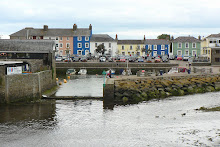











































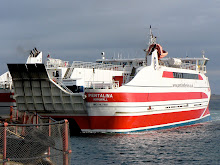











































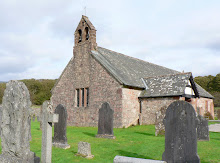








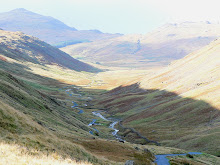








































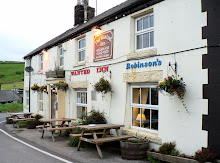











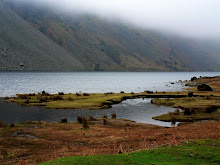









































No comments:
Post a Comment